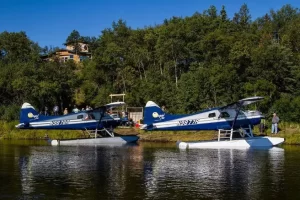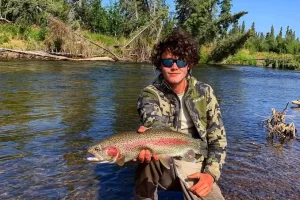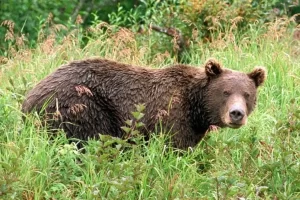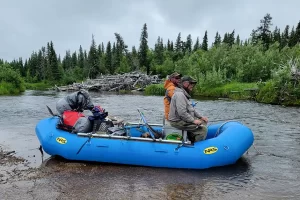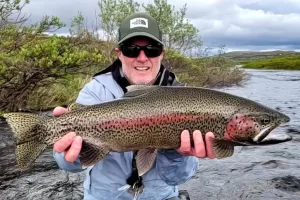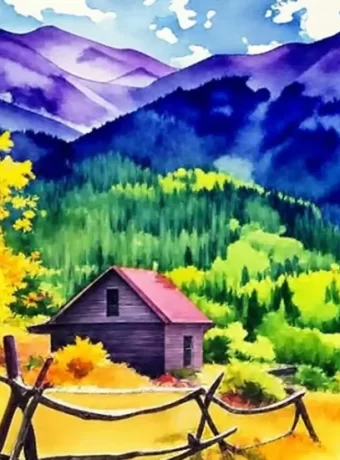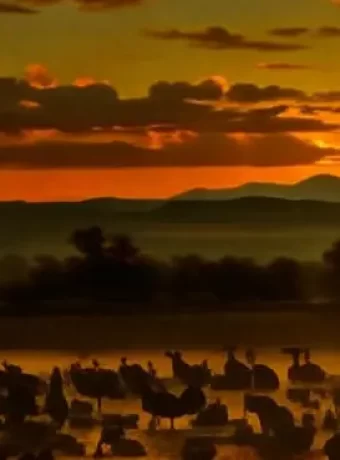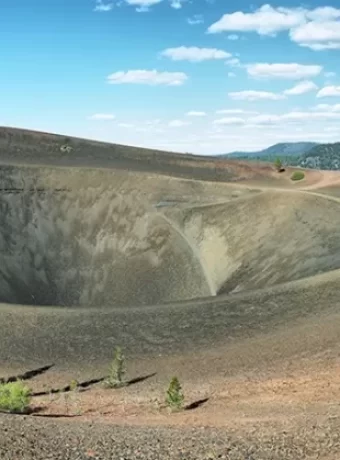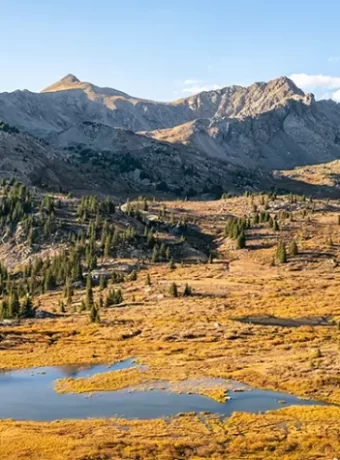Katmai National Park & Preserve: An Adventurer’s Paradise
Ever found yourself staring at a postcard of Alaska and wondering if such wild beauty truly exists? That’s Katmai National Park & Preserve for you, but trust me, it’s more than just stunning vistas. Imagine standing on the edge of an ancient world where giants roam – I’m talking about fat bears tipping the scales as they prep for hibernation.
Picture this: salmon leaping through cascading waters with brown bears in hot pursuit. It’s not some high-definition nature documentary; it’s Katmai live! Ever heard a bear snarl up close or watched them playfully jostle like furry sumo wrestlers?
I’ll let you in on something cool – by the time we’re done here, you’ll be mapping out your next adventure to witness these natural spectacles first-hand. Curious about what secrets lie within its vast expanse? Stay tuned because Katmai is full of surprises…
Table Of Contents:
- Welcome to Katmai National Park & Preserve
- Bear Watching at Brooks Falls
- The Valley of Ten Thousand Smokes
- Fishing Adventures in Katmai’s Watersheds
- Human History and Cultural Heritage
- FAQs in Relation to Katmai National Park & Preserve
- Not Even the Conclusion, So Much More to Come about Katmai National Park
- Fly Fishing is a World Wide Sport, Join In
Welcome to Katmai National Park & Preserve
Imagine stepping into a land where volcanoes whisper the tales of earth’s fiery power and brown bears roam free, fishing for their next meal. That’s what awaits you at Katmai National Park & Preserve, an epic expanse of wilderness that stretches over four million acres in Alaska. Here, nature writes its own rules, painting a landscape so vast it could swallow entire cities without a burp.
This untamed paradise was born out of chaos when in 1912, Novarupta erupted—earning bragging rights as the largest volcanic eruption of the 20th century. Today, Katmai stands not only as a testament to nature’s resilience but also beckons adventurers from around the globe who want to witness Earth’s raw beauty firsthand.
Katmai is located about miles southwest of Anchorage; it’s remote enough that you won’t find any roads leading there—a true badge of honor for those seeking solace from buzzing smartphones and overflowing inboxes. Getting here might be part challenge and part adventure—it involves hopping on a float plane or boat—but trust me when I say it’s worth every effort.
Bear Watching at Brooks Falls
The star attraction? The iconic Brooks Falls where bear-watching takes center stage. Picture this: A viewing platform gives you front-row seats to one of Mother Nature’s most gripping reality shows—as brown bears stand poised atop waterfalls ready to snag leaping salmon mid-air. It feels like being inside your favorite wildlife documentary except there are no screens between you and these majestic creatures hustling for their dinner (or bulking up pre-hibernation).
You’ll want to plan your visit during peak season—when sockeye salmon start running upstream—which means showing up between late June through July or September if fat bear appreciation is more your jam (no pun intended). By then bears are practically sumo wrestlers thanks partly due fattening up before winter naps kick in.
Falls Viewing Platform – Where Drama Unfolds Live.
If drama tickles your fancy, grab yourself a spot on the famous Brooks Falls viewing platforms. With some patience—and maybe luck—you can watch these furry fishers perfecting their craft: some standing steadfast in the rushing waters, others making breathtaking leaps to snag a meal. The sight is nothing short of mesmerizing as each bear showcases its unique fishing style—a testament to nature’s wonder right before your eyes.
Dive into Katmai’s wild heart where volcanoes and brown bears set the scene for an adventure of a lifetime. From explosive volcanic history to prime bear-watching at Brooks Falls, this Alaskan gem offers raw, unfiltered nature just a float plane away.
Bear Watching or Fly Fishing it can be chilly, windy and wet. Dressing comfortably is key. Performance Outdoor Apparel Click Here.
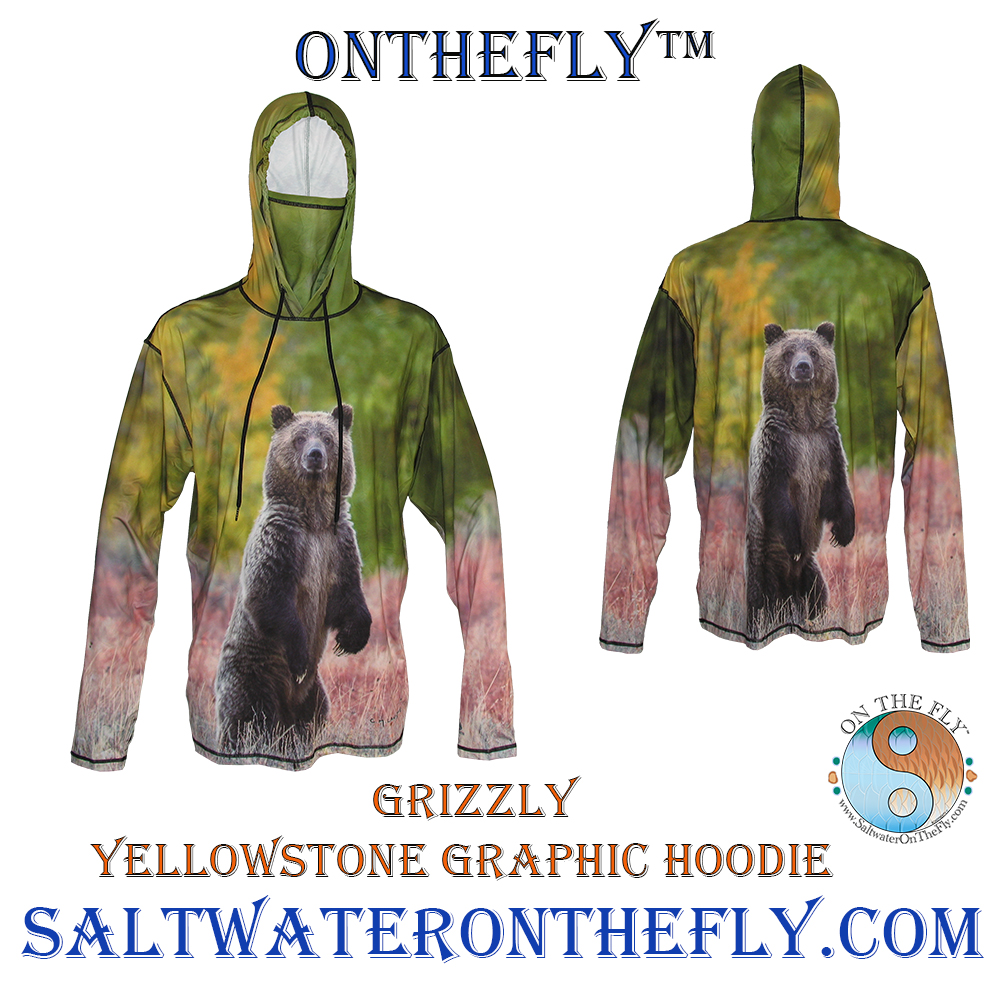

Bear Watching at Brooks Falls
Imagine standing on a viewing platform as the thunderous roar of Brooks Falls fills your ears. Before you, brown bears—some tipping the scales well into ‘fat bear’ status—are locked in an ancient dance with leaping salmon. This is no day trip; it’s an immersive experience that turns every visitor to Katmai National Park & Preserve into a storyteller.
Brooks Falls – A Spectacular Sight
The journey to see these iconic bruins begins with a float plane ride from King Salmon or Naknek Lake Camp, transporting you deep into Alaska’s wild heart where roads don’t dare tread. Once at Brooks Camp, anticipation builds like water behind a dam—the falls and their furry fishers are just moments away.
The air buzzes with excitement as visitors trek down paths worn by both human and ursine feet alike to reach Brooks River. Here, atop specially constructed viewing platforms designed for maximum bear watching without disturbing our four-legged friends, the show begins. Bears big enough to make grizzlies look modest jockey for prime spots along the riverbanks while sockeye salmon start their final race upstream—a spectacle not even Hollywood could script better.
A dense population of brown bears calls this place home during peak seasons when salmon runs turn rivers silver and gullets full. The famous Brooks Lodge offers opportunities beyond compare—for those who dream of seeing nature raw and untamed, there’s hardly any rivaling this stage set against backcountry hiking trails leading further into wilderness whispered about around campfires worldwide.
Timing Your Visit for Prime Viewing
You might think any summer month would do but hold onto your hat because timing is everything here. As July rolls in so do droves of Pacific salmon—and following close behind them are some of Katmai’s most celebrated residents: its brown bears whose body weight becomes legendary come autumn (you’ve heard about Fat Bear Week right?). It’s then that folks flock from far-flung corners for falls viewing unlike anything else on earth.
If July slips through your fingers like sand through an hourglass fear not. September brings another wave—a second chance—to watch bears fatten up before they hibernate beneath winter’s snowy blanket.
But if patience isn’t quite your virtue, don’t sweat it; June is just around the corner. Hang tight—summer fun awaits.
The Valley of Ten Thousand Smokes
Imagine stepping into a world so surreal it feels like walking on the moon, but instead of craters and space dust, you’re surrounded by ash flow deposits and a history that roars as loudly as the bears that call Katmai home. Welcome to the Valley of Ten Thousand Smokes—a testament to nature’s raw power and an adventure for those who dare.
Trekking Through Ash Flow Deposits
When Novarupta erupted in 1912, nobody expected it would become the site of the world’s largest volcanic eruption in the 20th century. Today, Katmai National Park & Preserve stands sentinel over this landscape—so vast at four million acres—that each step across its terrain is steeped in both geologic marvels and rich storytelling potential. To truly understand what makes this valley unique requires lacing up your boots for guided tours where science comes alive beneath your feet.
You’ll find yourself meandering through layers upon layers of volcanic remnants while experienced guides weave tales about how these ash flows have shaped everything from local ecosystems to global climate patterns. As they recount events surrounding Novarupta’s cataclysmic outburst with passion enough to rival any bard or poet, even seasoned travelers will feel a newfound respect for Earth’s dynamic character.
If you want more than just stories—if you yearn for evidence—look no further than underfoot where imprints left by pyroclastic surges mingle with newer life forging its way through hardened lava fields. Here lies proof that rebirth is possible amidst desolation; green shoots peeking through gray are monuments not only to survival but also resilience. Discover this journey first-hand, tracing steps back millions of years right up until today when salmon still spawn against all odds within nearby rivers despite their volcanically devastated pasts.
Ash isn’t all there is though—the park boasts other geological features too: pumice-filled valleys hinting at underground magma chambers yet undiscovered; ignimbrites whispering secrets only rocks can keep; jagged peaks standing guard around Naknek Lake reminding us why sometimes Mother Nature simply does things bigger—and indeed better—in Alaska.
Nature’s Resilience – A Story Written In Ash And New Growth
In contrast to destruction narratives often spun around natural disasters such as eruptions or earthquakes, these events also showcase the incredible resilience and adaptability of communities. People come together, rebuilding and supporting each other in remarkable ways. This unity exemplifies human strength in the face of adversity.
Katmai Notes:
Step into the Valley of Ten Thousand Smokes to witness Earth’s power and resilience firsthand. It’s an epic tale told in ash, where every footstep across Katmai echoes with history and rebirth
Fly Fishing Adventures in Katmai’s Watersheds
Imagine standing knee-deep in a rushing river, surrounded by untouched Alaskan wilderness. You cast your line into the pristine waters of Katmai National Park & Preserve and wait for that thrilling tug. With every second, anticipation builds until—bam. A rainbow trout takes the bait, igniting an adrenaline-fueled battle between man and fish.
In these vast multi-lake watersheds, anglers find themselves at the heart of some of the most exciting sport fishing on Earth. The Bristol Bay sockeye salmon—the very lifeblood of this ecosystem—create important spawning grounds here; their runs are legendary among those who know where to seek out such aquatic showdowns.
The symphony of nature plays as you reel in your prize under a canopy so green it seems painted on—a scene made even more surreal knowing you’re casting lines within reach of volcanically devastated regions surrounding Novarupta. This is not just fishing; it’s an adventure through time and terrain where few have tread.
At Get Lost in America, we offer two of the best trips in the Area. A 5 day Wilderness Float Trips. Spend the day floating with nights of star gazing. Or 5 Days in a remote Alaskan Wilderness Lodge.
Sockeye Salmon: The Migratory Marvels
If there’s one thing that defines Katmai’s waterways, it has to be its sockeye salmon runs. These migratory marvels journey from ocean to stream with unwavering determination, setting off a frenzy along Brooks River each summer.
You’ll see them leap over cascading falls while brown bears await their chance for a feast—an age-old dance between predator and prey playing out before your eyes right next to Brooks Camp Visitor Center. And if catching sight isn’t enough? Try angling amidst this annual run—you might just hook into Alaska’s famed red-hued fighters yourself.
- Float plane parked at the remote Alaskan Fly Fishing Lodge
- Alaskan Rainbow
- Alaskan Brown Bear
- Fly Fish Alaska Artic Grayling
- Fly Fish for Wild Alaskan Rainbows
- Float and Camp in the Wilderness of Katmai National Park and Preserver fly fishing for wild rainbow, that only dreams are made of
- Wild Alaskan Rainbows on a fly rod.
- The serenity of Tranquility of floating in the Alaskan Wilderness
Rainbow Trout: Pursuing the Illusive Prize
Amidst Naknek Lake’s serene expanse or along wild rivers teeming with life lies another treasure sought after by seasoned anglers: the elusive rainbow trout. Here they grow fat—and we mean ‘fat bear’ kind-of-fat—with bodies swollen from gorging on abundant Pacific salmon eggs during spawning season.
A day trip won’t do justice when chasing these iridescent beauties; but patience pays as they offer up fights worthy of any tale back home—or better yet—in tales told around campfires at the very rivers where they’re caught. These experiences bond anglers across generations, each story more vivid than the last.
Dive into Katmai’s waters for the ultimate fishing trip, where you’ll battle legendary sockeye salmon and pursue massive rainbow trout. It’s not just a catch; it’s an epic story in the making.
Human History and Cultural Heritage
The tapestry of human existence in Katmai National Park & Preserve is as rich and complex as the volcanic soil that nourishes its landscapes. Here, for over 9,000 years, people have forged a life amidst the wilds of Alaska—a testament to resilience that stretches across millennia.
Ancient Footprints Amidst Ash in Katmai National Park
In this corner of Alaska Peninsula’s rugged wilderness lies a record spanning nine millennia. It showcases how humans have continually adapted to environmental changes with ingenuity comparable only to the brown bears’ ability to bulk up body weight before hibernation. From early hunter-gatherers tracking mammoth herds through valleys now filled with salmon streams to modern anglers casting lines for arctic char and rainbow trout, each chapter adds depth to our understanding of survival and adaptation.
For thousands of years before it became popular among adventurers seeking bear watching thrills or fishing escapades on Bristol Bay’s abundant waters, Katmai was home—home where Native Alaskans mastered living off land that could both give bountifully during salmon runs and take away mercilessly through volcanically devastated eruptions like Novarupta’s in 1912. Their stories are etched into every layer from Naknek Lake’s shores down dirt roads less traveled by today’s visitor center tourists.
Lives Carved by Cataclysmic Events
As we stroll along viewing platforms overlooking Brooks Falls today, it’s easy to forget these lands once shook underfoot—the largest volcanic eruption in the 20th century not just altering topography but destinies too. The aftermath created what we know as Valley of Ten Thousand Smokes; however, long before visitors would come for day trips marveling at nature’s raw power hereabouts were communities whose daily realities revolved around such geothermal activity.
This very volatility gave rise—and sometimes demise—to unique cultural practices seen nowhere else on Earth: ways rooted so deeply they survived even when their environment did not entirely escape devastation from surrounding Novarupta or subsequent seismic activities shaping world-famous landscapes trekked yearly by outdoor enthusiasts eager for backcountry hiking challenges amid stunning scenery unmatched elsewhere on planet Earth.
Evolving Traditions Through Time
Katmai’s allure isn’t solely its stunning landscapes; it embodies age-old customs that have been handed down through time, long cherished by those who walked this land well before modern visitors arrived to marvel at its beauty.
Katmai’s rich history goes back 9,000 years, showing the resilience of humans who thrived amid Alaska’s wilds—living, adapting and shaping a culture deeply intertwined with its volatile landscape.
FAQs in Relation to Katmai National Park & Preserve
Is Katmai National Park & Preserve worth visiting?
Absolutely. It’s a treasure trove for bear enthusiasts and nature lovers craving Alaska’s wild side.
How much does it cost to get to Katmai National Park and Preserve?
The price varies, but you’ll mostly shell out for air or boat travel from nearby cities like Anchorage.
How do I get to Katmai National Park and Preserve?
You can’t drive there; hop on a float plane or boat from places like King Salmon or Homer.
Can I drive from Anchorage to Katmai National Park?
No dice. You’ve got to fly or sail since roads don’t connect Anchorage directly with the park.
Not Even the Conclusion, So Much More to Come about Katmai National Park
Imagine the raw power of Katmai National Park & Preserve, a land where volcanoes once shaped the earth and bears rule the rivers. Picture yourself at Brooks Falls, spellbound by brown bears in their natural theater. Think about casting lines into waters rich with salmon and trout.
Reflect on treks through volcanic valleys that speak to nature’s fury and creation. Remember stories of human resilience echoing across millennia within this rugged Alaskan wilderness.
Dream big for your next adventure; let it start where giants wander and history whispers among the ash – right here in Katmai.
Learn more about Fly Fishing Alaska’s Best River click here.
Fly Fishing is a World Wide Sport, Join In
Take a trip to Denmark, Iceland, Italy, even Montana has some very good fly fishing and wilderness adventures. I have met some of the most interesting folks from around the world in a drift boat. Or walking down a stream with fly rod in hand.

